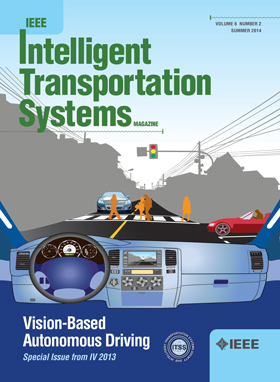V-DCRNN: Virtual Network-Based Diffusion Convolutional Recurrent Neural Network for Estimating Unobserved Traffic Data
IF 8.4
1区 工程技术
Q1 ENGINEERING, CIVIL
IEEE Transactions on Intelligent Transportation Systems
Pub Date : 2025-04-21
DOI:10.1109/TITS.2025.3559184
引用次数: 0
Abstract
Several studies have analyzed traffic patterns using Vehicle Detector (VD) and Global Positioning System (GPS) data. VD records the speed of vehicles passing through detectors, GPS data captures traffic speed on the roads. However, unobserved data gaps may arise due to physical malfunctions of sensors in VD data or interruptions in satellite signal reception for GPS data. Unobserved data adds complexity to the analysis and prediction of urban traffic networks. To tackle this challenge, researchers have attempted to estimate unobserved data using spatiotemporal patterns, but approaches that rely solely on past time points are inherently less reliable. In this study, we propose a Virtual network-based Diffusion Convolutional Recurrent Neural Network (V-DCRNN) for estimating unobserved speed data in urban traffic networks using a virtual network. The virtual network is created by adding nodes and edges in virtual directions based on observed nodes at intersections, thereby enhancing the traffic network. The V-DCRNN, which utilizes the diffusion convolution process in the virtual network, uses the augmented traffic network as input to predict traffic speed. Unobserved speed data is estimated based on the values of virtual nodes predicted by V-DCRNN. We evaluate the proposed V-DCRNN model through unobserved speed data estimation experiments in the urban traffic network, where we randomly mask individual nodes and entire intersections. The main contributions of this work are as follows: 1) the design of a virtual network to model additional traffic dynamics at intersections, facilitating the estimation of unobserved speed data; 2) the development of the V-DCRNN model, which leverages a self-attention mechanism to capture spatiotemporal dependencies in urban traffic networks by incorporating the virtual network as input; and 3) an evaluation of the V-DCRNN’s ability to estimate unobserved speed data in urban traffic networks with up to 20% unobserved nodes, demonstrating robust and reliable performance.V-DCRNN:基于虚拟网络的扩散卷积递归神经网络估计未观测交通数据
一些研究利用车辆检测器(VD)和全球定位系统(GPS)数据分析了交通模式。VD记录车辆通过探测器的速度,GPS数据记录道路上的交通速度。然而,由于VD数据传感器的物理故障或GPS数据的卫星信号接收中断,可能会出现未观测到的数据缺口。未观察到的数据增加了城市交通网络分析和预测的复杂性。为了应对这一挑战,研究人员试图利用时空模式来估计未观测到的数据,但仅仅依赖过去时间点的方法本质上不太可靠。在这项研究中,我们提出了一种基于虚拟网络的扩散卷积递归神经网络(V-DCRNN),用于使用虚拟网络估计城市交通网络中未观察到的速度数据。虚拟网络是根据在交叉口观测到的节点,在虚拟方向上增加节点和边,从而增强交通网络。V-DCRNN利用虚拟网络中的扩散卷积过程,以增强交通网络作为输入来预测交通速度。基于V-DCRNN预测的虚拟节点值估计未观测到的速度数据。我们通过在城市交通网络中随机屏蔽单个节点和整个交叉口的无观测速度数据估计实验来评估所提出的V-DCRNN模型。本工作的主要贡献如下:1)设计了一个虚拟网络来模拟交叉口的额外交通动态,方便了对未观察到的速度数据的估计;2) V-DCRNN模型的发展,该模型利用自关注机制,通过将虚拟网络作为输入来捕捉城市交通网络的时空依赖性;3)评估了V-DCRNN在城市交通网络中估计未观察到的速度数据的能力,该网络具有高达20%的未观察到的节点,展示了鲁棒和可靠的性能。
本文章由计算机程序翻译,如有差异,请以英文原文为准。
求助全文
约1分钟内获得全文
求助全文
来源期刊

IEEE Transactions on Intelligent Transportation Systems
工程技术-工程:电子与电气
CiteScore
14.80
自引率
12.90%
发文量
1872
审稿时长
7.5 months
期刊介绍:
The theoretical, experimental and operational aspects of electrical and electronics engineering and information technologies as applied to Intelligent Transportation Systems (ITS). Intelligent Transportation Systems are defined as those systems utilizing synergistic technologies and systems engineering concepts to develop and improve transportation systems of all kinds. The scope of this interdisciplinary activity includes the promotion, consolidation and coordination of ITS technical activities among IEEE entities, and providing a focus for cooperative activities, both internally and externally.
 求助内容:
求助内容: 应助结果提醒方式:
应助结果提醒方式:


